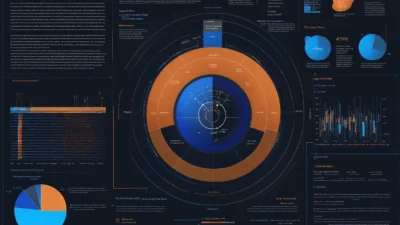In today’s digital landscape, protecting organizations from cyber threats is more crucial than ever. Cyber threat intelligence analysts play a key role in this effort. They are the first line of defense, continuously analyzing and interpreting data to identify and prevent potential cyber attacks before they happen. Their work is vital in keeping sensitive information secure and mitigating the risks posed by cyber criminals.
What Does a Cyber Threat Intelligence Analyst Do?
A cyber threat intelligence analyst is responsible for gathering, analyzing, and interpreting data on potential cyber threats. By examining data from multiple sources, they identify patterns and emerging risks. Based on their findings, they provide actionable insights that help organizations strengthen their defenses. These analysts are proactive in identifying vulnerabilities, ensuring that potential security breaches are addressed before they can cause harm. They work with other teams within the organization, ensuring that security strategies are aligned with the latest threat intelligence.
Skills Required for Cyber Threat Intelligence Analysts
To succeed in this role, cyber threat intelligence analysts must possess a blend of technical, analytical, and problem-solving skills. They need a solid understanding of cybersecurity frameworks and tools such as SIEMs (Security Information and Event Management). Additionally, proficiency in programming languages like Python is highly beneficial. An ability to analyze complex data sets and recognize patterns is also essential. Analysts must also stay current with emerging cyber threats and trends, as the cybersecurity landscape is constantly evolving.
Challenges Faced by Cyber Threat Intelligence Analysts
The role of a cyber threat intelligence analyst is not without challenges. Cyber threats evolve quickly, and analysts must stay ahead of hackers’ tactics. Continuous learning and skill development are essential in this field. Analysts also face pressure due to the high stakes of protecting valuable data and digital assets. With the increasing frequency of cyber attacks, the demands on their expertise are greater than ever.
Emerging Trends in Cyber Threat Intelligence
As technology continues to advance, so do the tools available to cyber threat intelligence analysts. Predictive analytics and machine learning are transforming the way analysts identify and respond to threats. These technologies enable analysts to forecast potential security breaches before they happen, shifting the focus from reactive to proactive security measures. Automation and AI also play a growing role in streamlining threat detection and response.
In conclusion, the role of a cyber threat intelligence analyst is more critical than ever in the digital age. As cyber threats become increasingly sophisticated, the need for skilled analysts continues to grow. Their expertise is essential in safeguarding digital infrastructures, ensuring that organizations can continue to operate securely in an ever-changing cyber environment.





